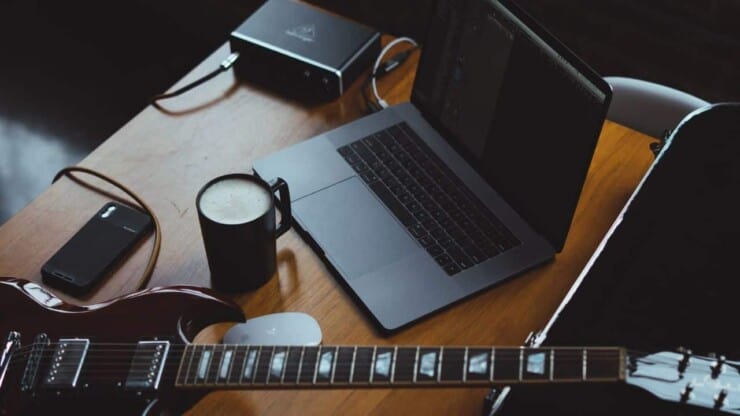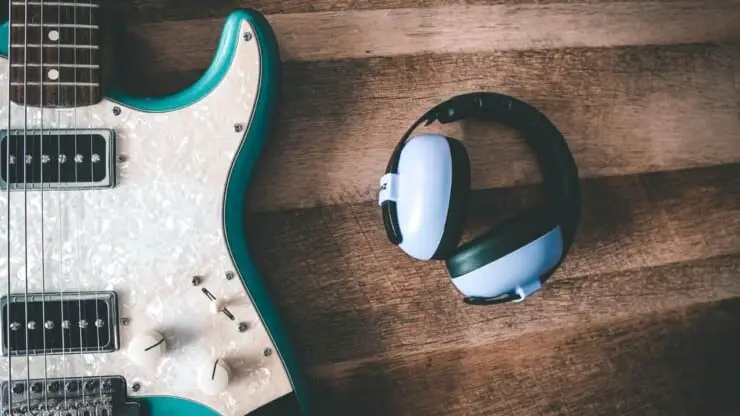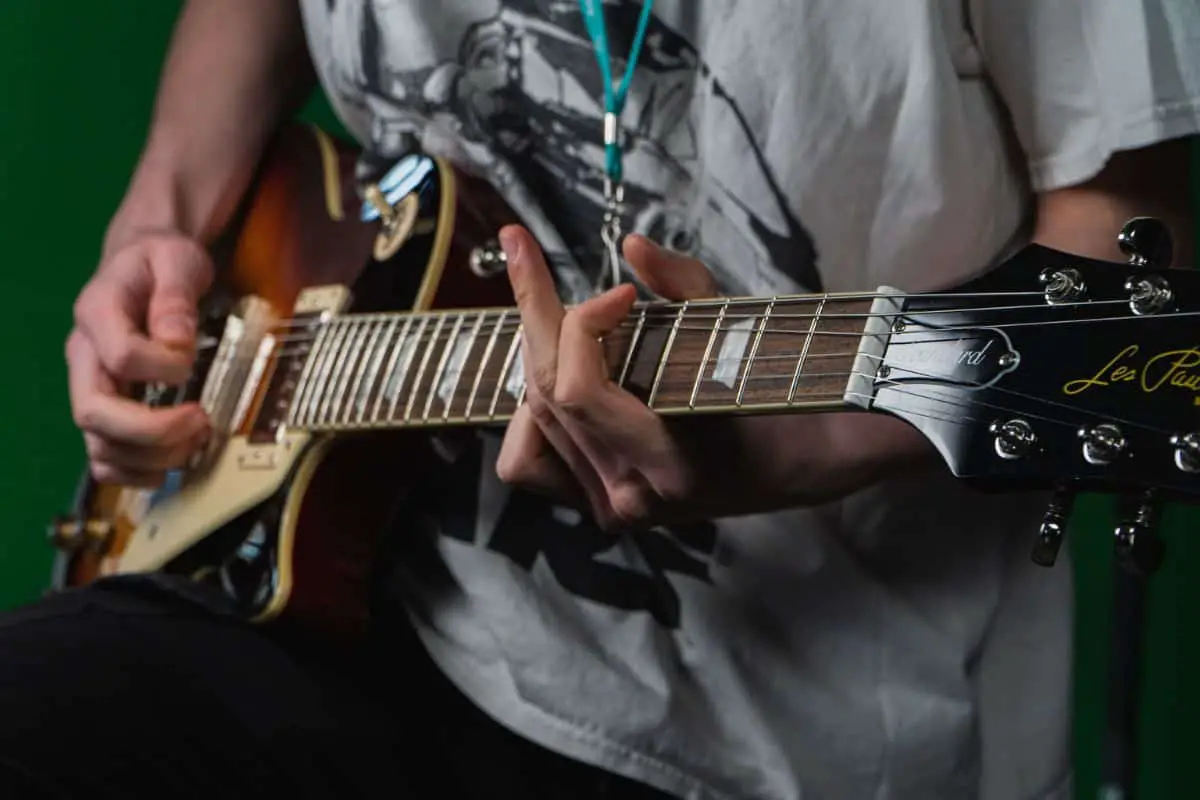Have you been recommended to purchase an amp for your guitar rig, but you don’t have enough money to buy a costly amp? Don’t worry, it is possible to play electric guitar without an amp, and this article will tell you how.
Playing electric guitar without an amp is actually a possibility and can be done through different methods. Some common ones include playing the guitar with a PC/Mac, portable devices, multi-effect pedals, audio systems, speakers, home stereo systems, and more.
In this article, you’ll get to know all about how does the guitar amp work, is it necessary to buy an amp, how to play the electric guitar without an amp, and more. Continue reading to get all the answers you’re looking for.
How does the guitar amp work?
Before finding out how to play electric guitar without an amp, it’s important to know what is an amp. Guitar amps are electronic devices that have the ability to boost the electric current provided to them as input. When provided with a sound signal with a low volume to the amplifier, the amp boosts it to a sound signal at a high volume.
Guitarists use amps for different purposes. Many guitarists prefer using them for amplifying the sounds coming out from their electric guitars. Electric guitars do not produce a loud volume like acoustic guitars too. Hence, electric guitar players often come across the need to boost their guitar’s volume. This is where a guitar amp comes into play. However, do you really need to invest money in an amp to boost your electric guitar’s volume?
Should you buy a guitar amp?
Acoustic guitars don’t actually need to be amplified. This is possible due to their hollow bodies and round sound holes/cavities. When strumming chords or plucking strings, the vibration from the bridge will resonate across the soundboard and into the body. The air contained in the body will cause the sound to reverberate out of the cavity. This will allow everyone around you to easily hear what you are playing.
Electric guitars are very different as they don’t have a round sound hole. Simply plucking the strings or strumming will not create the same vibration. Instead, they’ll rely on electromagnetic induction for converting acoustic sounds into electric signals. When the strings vibrate above the pickups on the guitar’s body, they’ll produce an electric charge. The charge will then be carried through the guitar’s internal circuit to the output jack. If the guitar has been plugged in, the signal will travel through the cable and into the amp. The amp will boost the signal and convert it into sound waves, which it’ll project through the speakers.
This is the key aspect of what makes guitar amps so valuable for electric guitarists. They don’t just boost the volume but also control the tone, steadying the guitar’s natural sound on a clean setting, or creating distortion on the crunch setting. They’ll also offer EQ controls such that you can adjust the bass, treble, and mid when playing.
Other aspects of guitar amps
Despite the obvious benefits of owning a guitar amp, there are a few disadvantages as well. High-quality amps can be almost as expensive as guitars. They’ll take up space, which can be problematic if you’re residing in a tiny apartment. Even a small 10-15W amp can be cumbersome to carry around. Meanwhile, vintage and budget amps normally lack headphone jacks. This makes it quite difficult if you’re looking to play without disturbing or your neighbors or other people around you. Luckily for you, these problems can be solved with other options that you can incorporate into your practice sessions.
Playing unplugged
Hollow and semi-hollow electric guitars will be the best option when it comes to playing unplugged. As they don’t have a large, round cavity, they won’t sound as loud or rich as acoustic guitars when they aren’t connected to the amp. However, the small violin-type sound holes will let you hear what you’re playing at the clear volume level. Solid-body electric guitars will be slightly trickier. They’ll have no sound holes, so they’re comparatively quieter than hollow-body guitars when played unplugged.
Make sure there aren’t any loud background noises like a TV in the next room. Otherwise, you’ll be able to hear the notes and chords as you’re playing them. Of course, this method will not work when you are jamming or performing with others. But it’ll be a quick and easy way of practicing at home, especially when playing late at night. Some guitarists claim that you shouldn’t play unplugged often. If you do that, you may find it hard to control your sound once you’ve switched to an amp.
However, every guitarist is different. Some beginners tend to lack the confidence needed for playing plugged-in when they are learning their first few chords. In case you’re only playing for a few minutes, you probably will not want the hassle of plugging in the guitar to practice a short riff. It isn’t the most ideal option, but depending on the needs, playing unplugged can be a highly effective way of practicing at home without an amp.
How to play electric guitar without an amp?
Although there are a few cheap amp options available in the market, you might want to know other alternatives. You’ll preferably want to know how to play the electric guitar without an amp. If you have a stereo system or a PC or stereo amp headphones, this is possible. Guitar equipment can sometimes be costly, so you’ll want to look for alternatives. Here are a few methods that are simple and can be used as alternatives to an amp. Although using an amp is good, it’s possible even if you want to play without the amp.
Home stereo system
Do you have a home stereo system at home? If yes, then it already has a mini amplifier as a part of it. However, it doesn’t work the same way that an amp does. This is the case as it’s designed for amplifying the sound coming from the record player or other audio sources. However, the basic premise will be the same, and you’ll probably require an adapter.
Your home stereo system might come with an input that can be used for your electric guitar. The key would be to use the right cables. For instance, if the stereo system features an “aux input”, then you will need a simple adapter. It should connect the 1/4” jack to the 1/8” input.
Alternatively, RCA or phono cables may be required as well. It’ll depend on the input of the stereo system. Luckily, you can easily check the manual and see which type of cable is suited to the system. An adapter may cost you a few bucks on Amazon. Alternatively, you can even head over to your local electronics or music store and ask for a solution.
Your home stereo system isn’t exactly designed for acting as the amp for a heavy electric guitar. However, it can still be used to good effect. If the system features good speakers, then you can easily get good-quality sound. Some people prefer investing a lot in assembling a fantastic stereo system to attain an exceptional level of audio clarity. You can invest in great subwoofers for amazing bass response.
This will give your guitar a deep, thick sound when it is plugged into the sound system. The main disadvantage of this system will be that it isn’t a portable option. Many traditional guitar amps can be transported easily, something that isn’t possible with a full stereo system.
PC or Mac
Another way to play an electric guitar without an amp would be to use a PC or Mac. You can connect your guitar to the PC/Mac using a USB interface and use it as an alternative to amps. The interface will amplify the electrical signal before turning it into a signal that can be understood by the PC. For a studio musician who uses a laptop, this can be incredibly useful. Not only will you be able to hear what you’re playing through the computer’s speakers, but you can also plug in your headphones and listen to it privately.
The guitar’s pickups will provide the signal to the interface, boosting it to audible levels. The signal will be loud enough for the audio to get read by the computer programs. From there, you’ll be able to do a wide variety of tasks using some simple software. It is normally easy to play and listen to. However, a plethora of new options gets opened up by using your PC or Mac.
In the modern age, home recording will be an option as well. There are much great software that you can use for altering the way your guitar is sounding. This will help you get a clean recording that is perfect for laying down the demos or in the comfort of your home studio.

Both PC and Mac will be great alternatives. Many musicians prefer using Mac as their preferred Operating System, as it lends itself to many creative uses. However, there are other great options as well. The Windows OS will be great for finding many software. There are even virtual instruments and more compatible with Windows PCs. Naturally, both PC and Mac devices include portable options as well. If you have a laptop, you can carry it around. Meanwhile, standard audio interfaces and guitar interfaces will be pretty portable as well. Your computer might
Portable devices
There isn’t much that you cannot do with your Android smartphones or iPads these days. In fact, you can even connect your guitar to them. There are different methods for connecting your guitar to your smartphone, whether it is Android or iOS. The same will apply to tablets and iPads. These devices will come with many software options that you can easily download and use. Apple devices normally come with GarageBand, which is a powerful DAW to begin with. If you’re connecting your guitar to your Apple device, then GarageBand will allow you to use the guitar signal for recording or practicing.
You’ll need some type of interface, just like you’d need with a laptop or computer. JAM interfaces will be great for Apple devices as well. There are other options too, all of which will serve the purpose of boosting audio signals and communicating with the smartphone or tablets. You may have to download a specific app to help you get started. Most of the interfaces will come with an input gain, similar to a guitar amp. This way, you’ll be able to turn the audio source up for giving a clear, loud signal.
With the rapid advancement in technology, you can expect even more hardware and software to be released in the future to make it easier to use your guitar with your smartphone or tablet. As your smartphone or tablet is normally always active, this makes it convenient to connect and use at any time. Your smartphone will be similar to having a mini-amp in your pocket while also serving as a mini studio.
Multi-effects pedals
Multi-effects pedals are a wonderful alternative for not just beginners, but experienced guitarists as well. The technology today means that many effect pedals that guitarists love like reverb, delay, or compression can be easily rolled into a simple pedal. A wonderful example of that would be the Boss GT-100.
While having loads of reverbs and other effects in-built, it’ll also feature convenient pedal control. This means you’ll be able to use your hands purely to play the instrument itself. Moreover, it’ll come with cool features including a USB connection. It’ll allow you to use the pedal in conjunction with your laptop or computer. A multi-effects pedal will be a wonderful option for portability. Instead of carrying a huge pedalboard full of effects, you can simply carry something like the Boss GT-100. You’ll be able to access limitless parameters in a simple device while also getting amazing connectivity.
Many multi-effect pedals will help you shape and model the tone for creating just what you’re looking for. However, they aren’t perfect and might not provide enough amplification that you’re looking for. The effect pedals could work as the audio interface to your computer. But if not, you’ll still need it to go into another audio device for providing you with the sound and amplification. Although these pedals may be able to do many things to the sound your guitar is creating, they aren’t actually a one-stop solution. They will still require you to invest in an amp.
Guitar headphone amp
You would have probably heard of headphone amps. Usually, they’re a device for boosting the audio signal going into your headphones and are used to listen to music. They can also offer higher fidelity and details. If you go into the recording studio and take a look at the headphones, they may well be linked to a headphone amp. This is the case as it gives better clarity.
You can even use a headphone amp as a way of playing electric guitar without an amp. It’ll work in a fairly simple way. There will either be Bluetooth or a wired device that plugs right into the output of the guitar. Some of them are of a similar size as that of a matchbox. This means it’ll be no great imposition for carrying one around with you. You can connect your headphones and directly listen to the sound you’ve just created. Many of these types of headphone amps also come with an amp simulator such that they sound much more like a specific guitar amp.

When talking about convenience, these products do take some beating. It’s easy to set up a guitar headphone amp, and it’ll let you listen to music privately with minimal equipment. If you’re a beginner who is starting to learn to play the guitar, then this will be a great way of avoiding the embarrassment that comes with the entire learning process. Many guitarists constantly use their headphones anyway. So, there isn’t a huge adjustment to be made when you’re playing without an amp by using the headphone amplifier.
Connecting to a PA system
This isn’t the most feasible option, but it is an option, nonetheless, as not everyone will have access to a PA system at home. Many rehearsal spaces and practice studios come with PA systems that you can connect to. You will be able to play the guitar without needing any sort of amplification. Further, you can connect in the same way that you’d connect with a digital piano. The output from the piano will go straight into the input of the PA system.
This method essentially means you don’t really have as much control over the sound and the effect. However, if you are just looking for a functional way of playing electric guitar without using an amp, then this will be a method to consider.
Conclusion
Thank you for reading. Hopefully, now you know a lot more about how does the guitar amp work, is it necessary to buy an amp, how to play the electric guitar without an amp, and more. It isn’t possible for everyone to afford an amp, and it begs the question, is it possible to play the electric guitar without an amp? The answer is yes! Some common alternatives include playing the guitar with a PC/Mac, portable devices, multi-effect pedals, audio systems, speakers, home stereo systems, and more.



